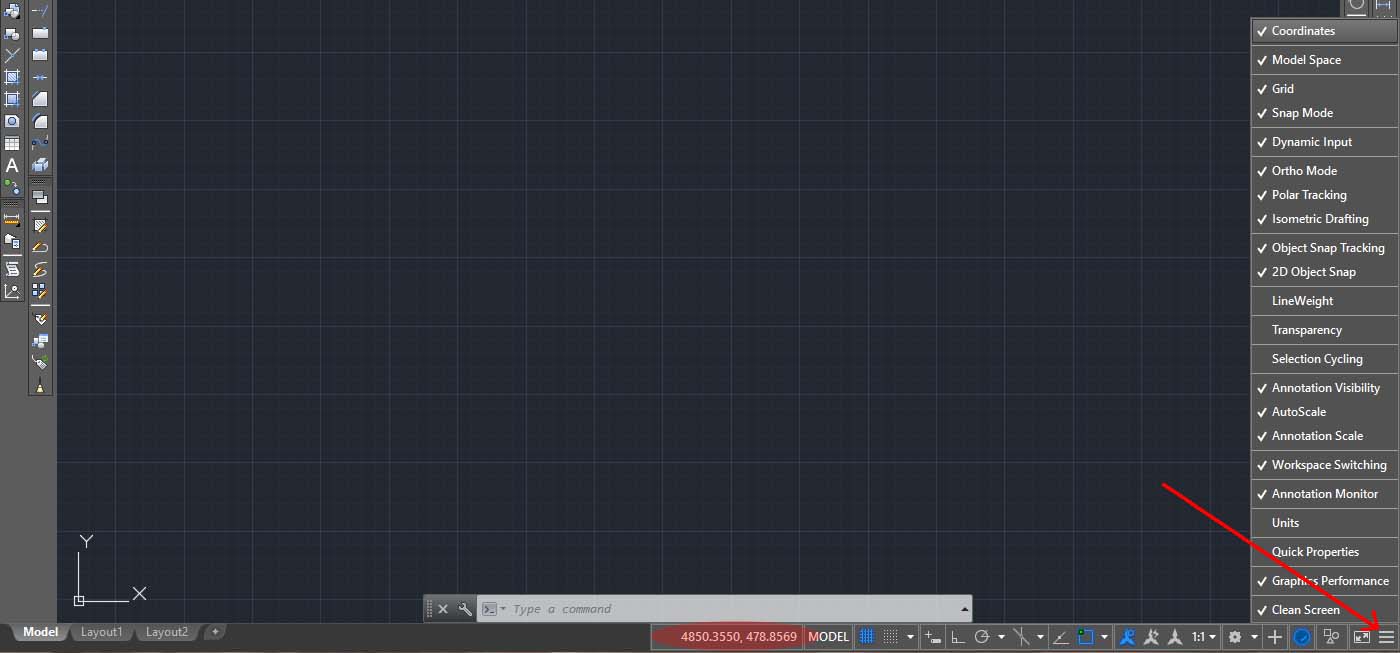The "coordinates" of AutoCAD
We see now the "coordinates" of AutoCAD, although they are not crucial in simple designs, but is still useful for understanding the operation of the program.
On older versions they are visible in the lower left, below the command line, you can now made it visible by clicking the button to the right of the “bottom bar” and checking the first voice "coordinates".

As you move the mouse over the drawing you will see the numbers move quickly, these numbers represent the X,Y coordinates of the point where the cursor is located.
By clicking on it with the mouse, activate or disable those coordinates.
A line drawn on the drawing area will therefore have the X and Y coordinates for each of the two points that define it, the beginning and the end.
Practically we are drawing on a "Cartesian Plane".
UCS
We have seen that the UCS symbol represents the X,Y axis of that "Cartesian plane" on which we are designing and by using the "ortho" function we can constrain AutoCAD drawing parallel to these axes.
If we want to draw for example 45°, we can rotate the axis of the UCS.
To do this just type in the letters on the keyboard UCS and then press the enter key.
After typing the letter Z and then press “enter” again.
The letter Z indicates the third axis, that looking at the sketch would be projected into our eyes and is therefore the pivot around which will rotate the axes X and Y.
Type 45 and then press enter yet.
As you can see, the UCS is rotated and with it the cursor, the command is completed.
Drawing now with "ortho" active we will be constrained to 45°.
I now repeat the command, writes UCS and press Enter twice in a row; the UCS will be brought back by the inclination of origin. Simple right?
We repeat again, type in UCS and then hit enter, now enter an OB instead of Z, then hit enter.
These letters are an abbreviation for "OBject" as suggested by the command line.
The cursor changes to a selection handle, if we have a slanted line on the drawing and select by clicking on them with the mouse, the UCS will catch up to that line.
To bring it back to the origin, as before repeating the command and press Enter twice in a row, or type a W instead of Z and then enter.
Tweet